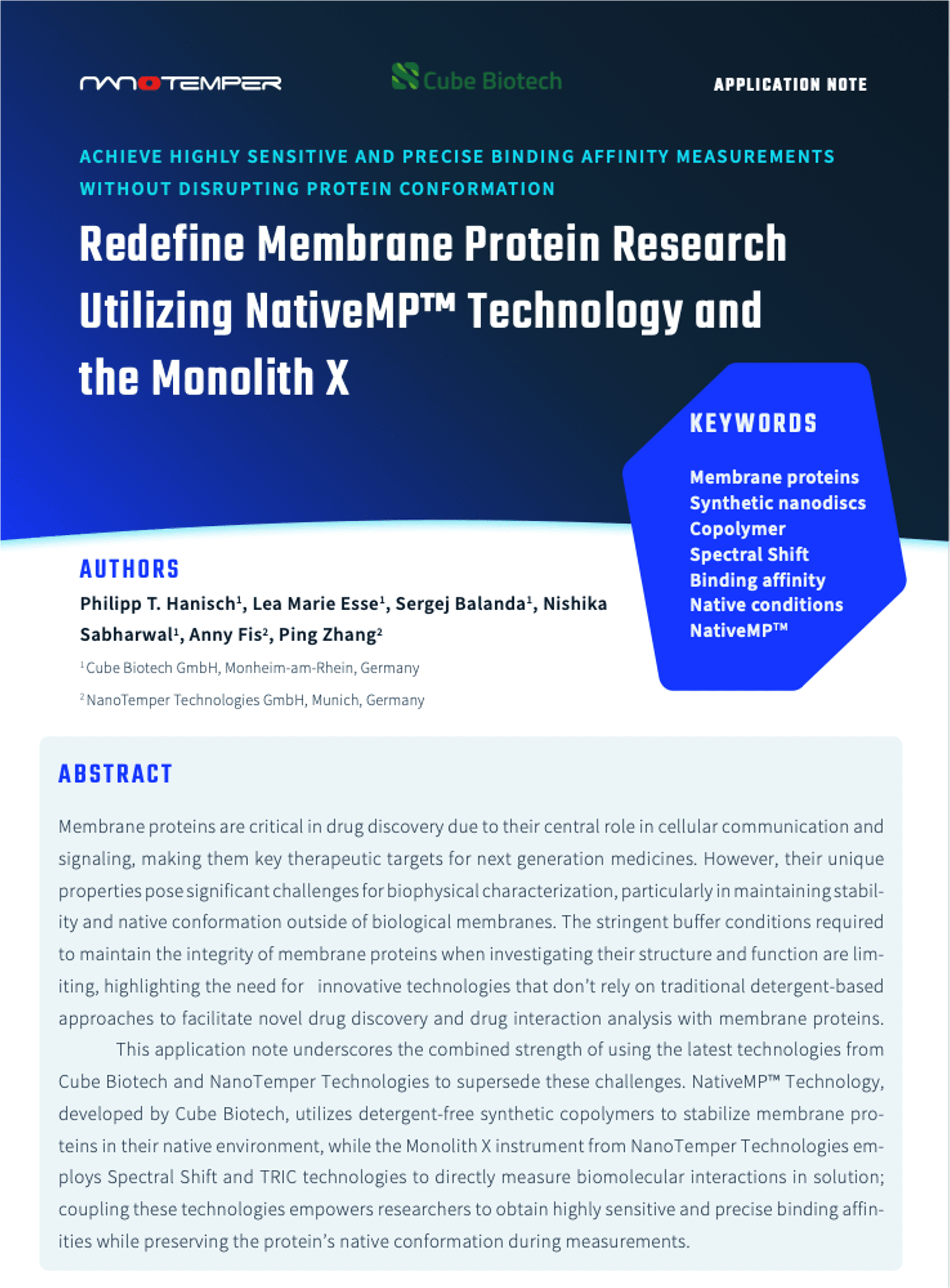Koch, S., de Wit, J., Vos, I., et al.
Journal of Biological Chemistry 2016, vol: 291(43) doi: 10.1038/s41467-020-19204-y
Abstract
Protein translocation across the bacterial cytoplasmic membrane is an essential process catalyzed predominantly by the Sec translocase. This system consists of the membrane-embedded protein-conducting channel SecYEG, the motor ATPase SecA, and the heterotrimeric SecDFyajC membrane protein complex. Previous studies suggest that anionic lipids are essential for SecA activity and that the N terminus of SecA is capable of penetrating the lipid bilayer. The role of lipid binding, however, has remained elusive. By employing differently sized nanodiscs reconstituted with single SecYEG complexes and comprising varying amounts of lipids, we establish that SecA gains access to the SecYEG complex via a lipid-bound intermediate state, whereas acidic phospholipids allosterically activate SecA for ATP-dependent protein translocation.
Topics: Monolith, MST, Membrane Proteins, Publications










